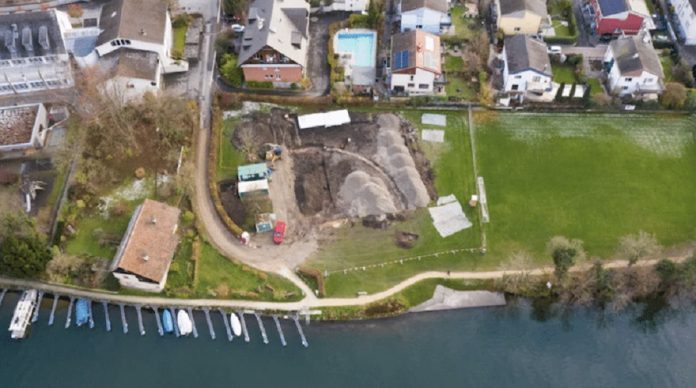
Archaeologists in Switzerland have uncovered the ruins of a Roman-era amphitheater — possibly the youngest on record — where spectators likely watched gladiator fights and animal hunts with bated breath.
The oval-shaped amphitheater was built in an abandoned Roman quarry that had been in use until late antiquity. This clue, combined with the discovery of a coin dating to between A.D. 337 and 341 at the site, indicates that the amphitheater dates to the fourth century A.D., which would make it the youngest amphitheater in the Roman Empire, Jakob Baerlocher, an archaeologist at the site and head of excavations in Kaiseraugst, Switzerland, told Live Science.
A few other clues point to a fourth century A.D. date, including the composition of the amphitheater’s building materials, such as its stone blocks and mortar, which are “reminiscent of that of the late antique fort wall,” Baerlocher told Live Science in an email.
Archaeologists with Aargau Cantonal Archaeology, an agency that works with the Aargau government, already knew about the site’s ancient Roman quarry, but they weren’t expecting to find an amphitheater there, according to the statement.
The amphitheater, which is about 50 meters long and 131 40 m wide, sits in the valley of the quarry. Nearby is the Castrum Rauracense, a late Roman fort situated on what was the northern border of the Roman Empire in A.D. 300, just a stone’s throw from what was Germania.
The archaeological team unearthed a large gate to the south of the amphitheater, which was flanked by two entrances. On the arena’s western side, the archaeologists found preserved sandstone blocks by another entrance. The inside arena walls were plastered, and the imprint of a post from wooden grandstands, or seats, was also visible.
“All the evidence together — the oval, the entrances and the post placement for a tribune [elected official] — speak for the interpretation as an amphitheater,” representatives from the Department of Education, Culture and Sport wrote in the statement.
Source: www.livescience.com







































